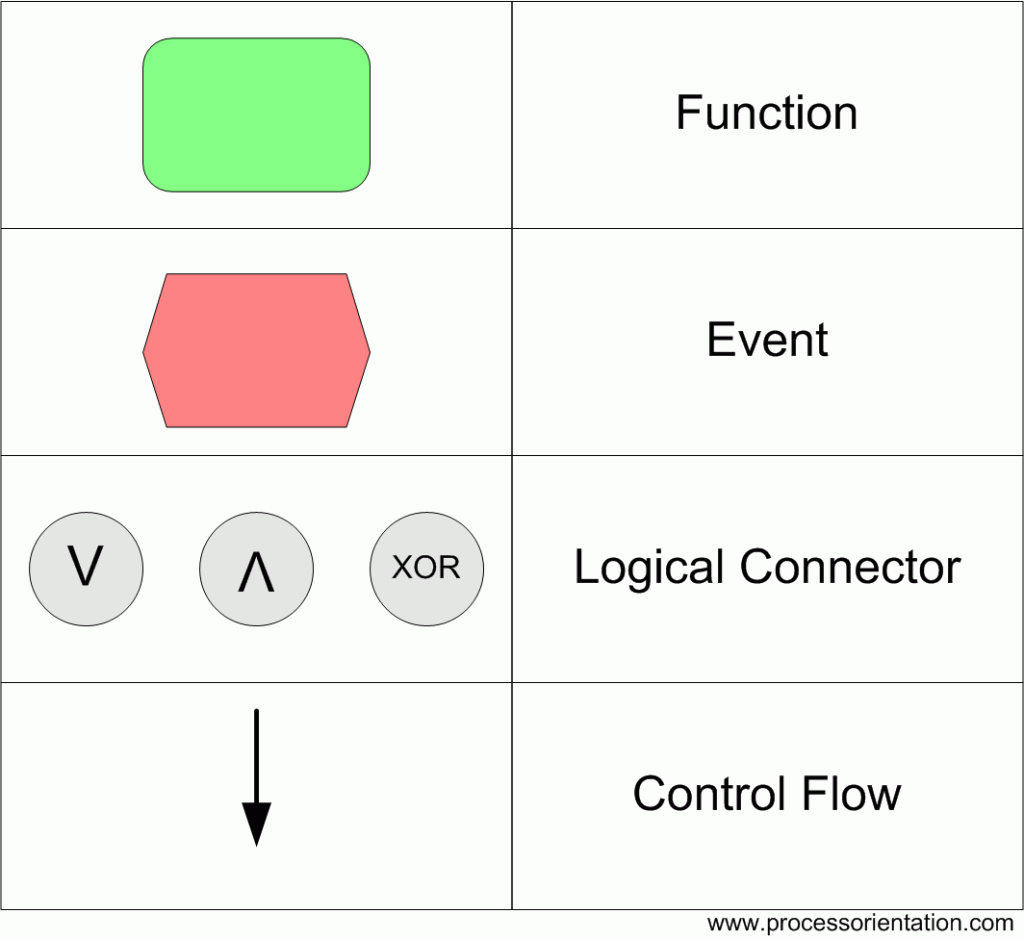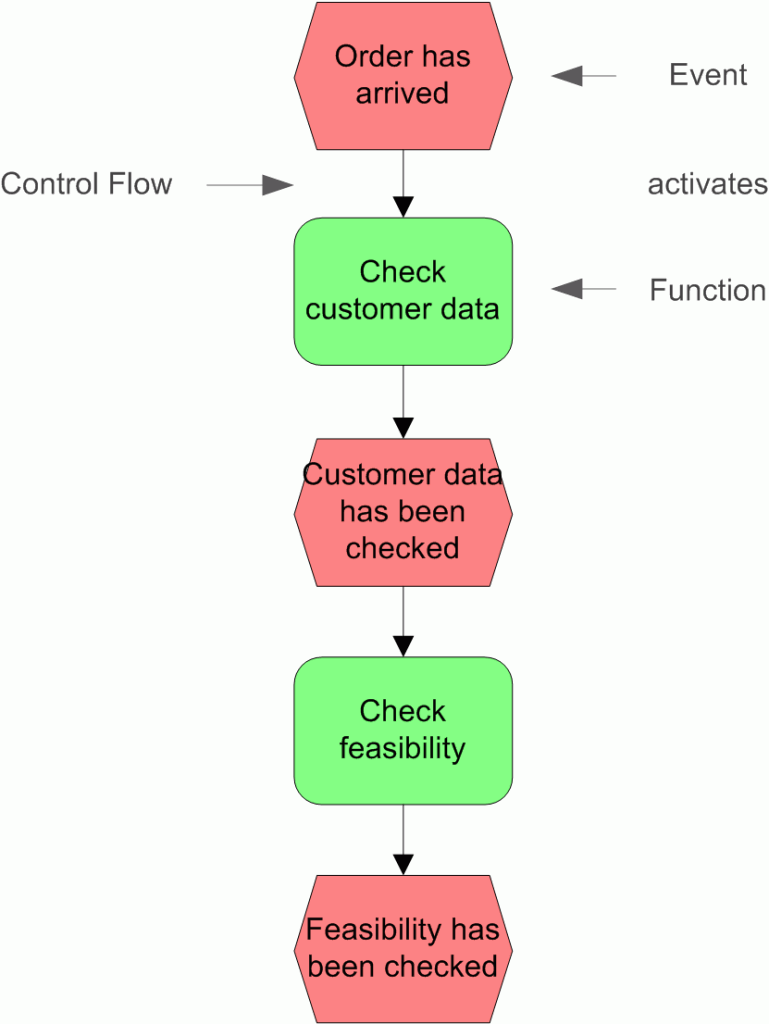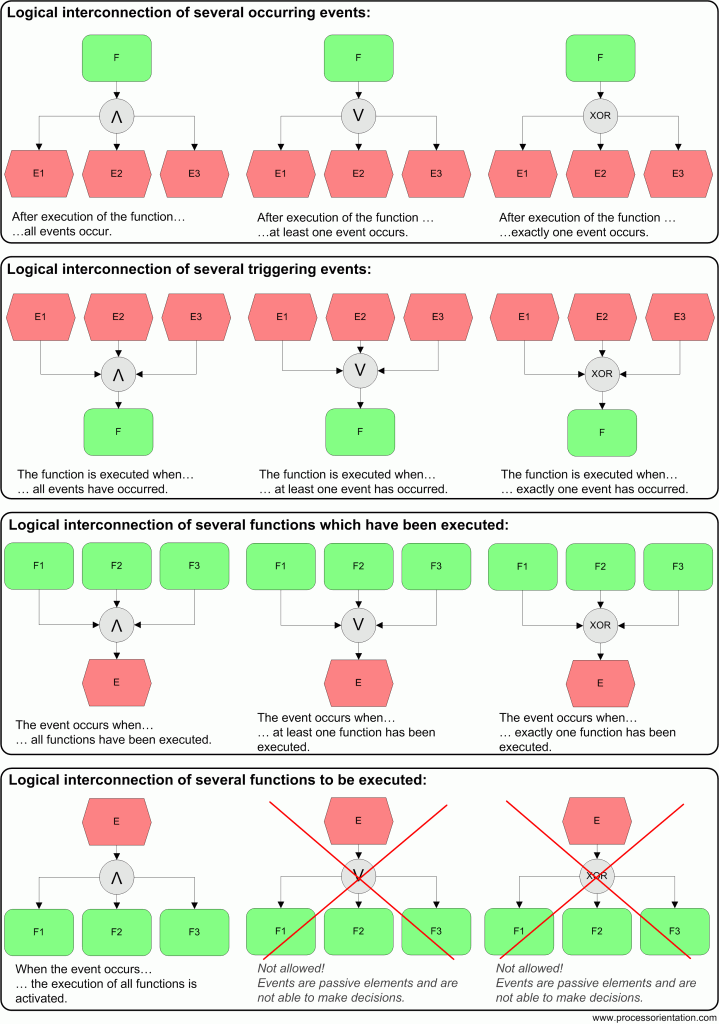This article gives a brief introduction into modeling business processes by using the Event-Driven Process Chain.
The Event-driven Process Chain (EPC) is a type of flowchart and was developed by Prof. Wilhelm-August Scheer at the Universität des Saarlandes in the early 1990s. There are four basic elements of the EPC:
- Events: The event describes the incidence of a state. This state activates a function or is the result of a function. Events are passive elements in EPC. Every process begins and ends with one or more events.
- Functions: Functions represent tasks or activities within the company. Functions describe transformations from an initial state to a resulting state. They are active elements in EPC. Functions consume resources and time. A verb should be used for the name of a function.
- Logical Connectors: By using the three different logical operations (AND, OR, and XOR), branchings can be inserted between events and functions.
- Control Flow: The control flow describes the chronological-logical dependency of events and functions and can be split up by using the logical connectors.

The basic EPC elements. Source: Course “Process Management”, Graz University of Technology.
A simple EPC model is depicted in the following picture:

A simple EPC diagram. Source: Course “Process Management”, Graz University of Technology
Events and functions can be connected by logical connectors in the following ways:

Events, functions and logical operators in the EPC. Source: Course “Process Management”, Graz University of Technology